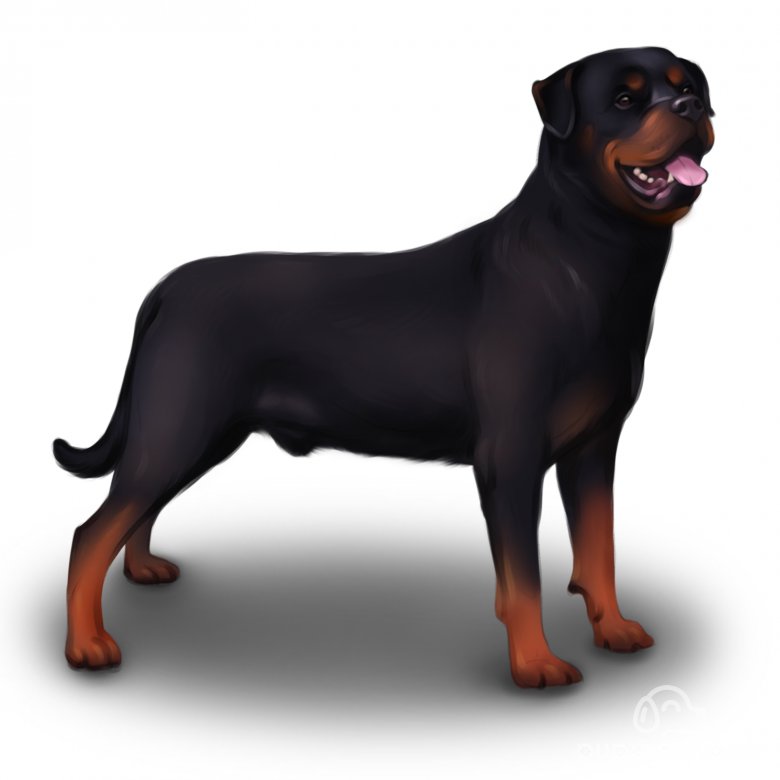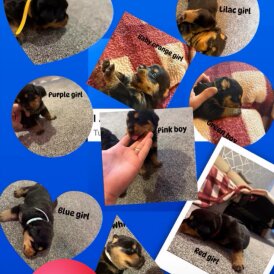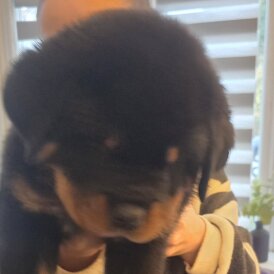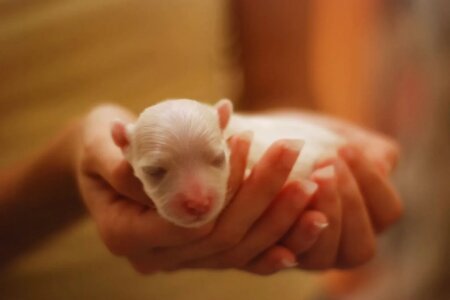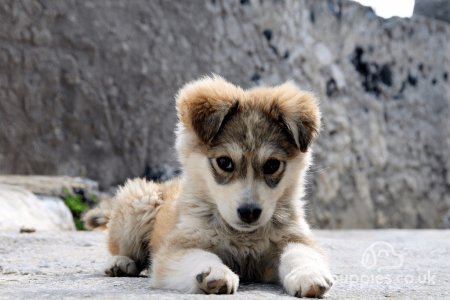History of the Rottweiler
According to some sources the Rottweiler breed goes back to ancient times, when Roman troops marched across central Europe. Over the centuries, these dogs settled down to become useful drovers. Many were employed in the German town of Rottweil, an important centre of the cattle trade. Hence the breed’s name. The Rottweiler was a useful all-rounder, driving cattle, protecting herds and even serving as a draft animal – pulling carts. These places of trade developed into thriving large towns and the dog’s drafting duties fell to horses and donkeys. The result was the decline of the Rottweiler. It was only saved from extinction in about 1900 by breed enthusiasts.
Health
His life expectancy is around 10 years and they are generally very healthy, fit dogs if kept well. These big dogs need large homes and gardens and are suited to either the countryside or towns needing around two hours exercise a day. If overfed and under-exercised Rottweilers can be especially prone to obesity. A nobel and alert dog who will protect his family if challenged.
Care
The Rottweiler is a large, muscular and imposing dog. Black and tan in colour, the coat is short and requires the minimum amount of grooming. Being a mastiff type breed, he has a large head, short muzzle and strong jaw. Rottweilers have a natural guarding instinct and can hold their own when challenged. That said they generally have a very kind nature.
Are Rottweilers easy to train?
This is a large powerful dog, weighing in at around 45kg. Without proper training a Rottweiler can prove to be quite a handful. Training requires patience and commitment, starting when the dog is still a puppy. The longer an owner leaves it, the harder it’ll be. Fortunately the Rottweiler is an intelligent breed that wants approval and love. Training should be a positive experience and good outcomes rewarded. Owners must avoid rough or aggressive behaviour. A dog of this size can be intimidating to other people and animals. So making sure the dog is well received is important. This can be achieved through early socialisation, putting pets at ease in social situations. Not overwhelming puppies with noise or busy places, but slowly introducing them to others over a period of time. The basic commands, ‘sit’, ‘down’, ‘come’ should not be neglected. This will make socialisation easier. While training can sometimes seem like hard work, for both owner and dog, turning it into a game can help. Keeping healthy treats to hand and giving lavish praise when things go well is the key to success. It is quite natural that both owner and dog will become frustrated at times. When this happens owners should take time out, remain calm and try again. The first command is to teach is ‘sit’. Without this in place, all basic day-to-day activities will be tough. The range of commands a dog can remember will vary by individual, but ‘no’ is something that all dogs need to understand. ‘Down’ is another important command, as are ‘stay’ and ‘come’. Training is not something learnt overnight, it takes weeks of dedication. Done correctly, it will result in a well behaved and happy dog. If neglected, it will lead to a whole heap of trouble – in the case of a powerful dog like a Rottweiler it can be extremely dangerous. Inexperienced owners should consider getting help from a professional if they are at all unsure about how to proceed.
Do Rottweilers shed?
Yes, surprisingly for a short haired breed. To keep dogs hairs around the house to a minimum, it’s best to spend a few minutes every other day brushing the coat. Grooming is not only handy for managing unwanted hair, but a great way to get a dog used to being handled. While brushing should only take a few minutes, it shouldn’t be rushed. It is an opportunity for bonding between owner and dog. It is also the perfect chance to check for bumps, bites and spots caused by fleas and other parasites. The ears need particular attention, to make sure they are clean and not irritated in any way. All four paws should be inspected to ensure they are free of cuts or incursions. Correct grooming will ensure the coat is free of dead hair and matting. It is also a form of massage, which helps distribute naturally occurring oils designed to keep hair clean and in pristine condition. Brushing should follow the natural direction of the fur, starting at the head and moving towards the tail. Occasionally, but not too often, a Rottweiler will require a thorough wash. If using a tub or shower for the purpose, a non-slip mat will help the dog feel more secure.
Temperament
These dogs are not for the inexperienced and have suffered in the past when they became over-popular for people who used them to create a tough, macho image. For that reason Rottweilers have had their fair share of bad press, often misrepresented as ferocious and untrainable. In reality, their size and build means they have the potential to be aggressive in the wrong hands so it is of upmost importance that Rottweilers are socialised and trained correctly from the very beginning. Rottweilers are in fact very trainable, they love to work and have been used competitively as obedience dogs. He has also been used extensively by the military and as a police dog in more recent years.
Is a Rottweiler a good family dog?
A well socialised Rottweiler bonds well with the family and is accepting of children and other pets in the household. As its history suggest, this breed is naturally inclined to look out for people and animals considered to be part of the ‘pack’. Rottweilers have a natural inclination to herd smaller members together, so keeping a watchful eye on them. While amusing, it can also be annoying for children. It should be addressed early on and discouraged through training.
Can a Rottweiler be left alone?
This is not easy to answer, because it often depends on the individual. Most socialised dogs want to be part of the family and do not enjoy time alone. This is particularly true of a dog that has got used to company as a puppy and suddenly, rather abruptly, finds itself ‘marooned’ while the rest of the family abandon the home for the day. Think carefully before buying a Rottweiler if you can’t provide the attention it needs. It can lead to behavioural problems and destructive tendencies.
Other Organisations
Thank you ever so much for the following sources to help shape this blog: https://rottweilerwelfare.co.uk/ https://www.thekennelclub.org.uk/services/public/breed/display.aspx?id=5137









